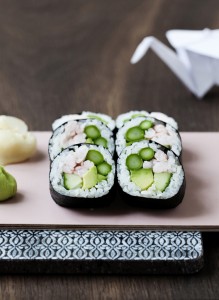
The biggest difference between a Danish and a Japanese Sushi Chef is the food. Yep, I said the food.
Sushi prepared by a Danish Sushi Chef tastes completely different from Sushi prepared by a Japanese Sushi Chef. There are several reasons for this.
Danish Sushi Chefs have a completely different professional background than Japanese sushi chefs. In Japan, different requirements are placed on the skills of Sushi Chefs.
Danish Sushi Chefs use different ingredients in the preparation of sushi than Japanese Sushi Chefs. Japanese chefs use ingredients that highlight the flavor of exactly the fish used for sushi. The taste is highlighted in a way that creates a unique gastronomic experience.
Danish Sushi Chefs use other cooking techniques in making sushi. It ranges from cooking sushi, filleting fish and not least the hand techniques for making the sushi pieces.
On the Sushi Course for Beginners, you learn, step by step, how to make sushi like Japanese Sushi Chefs. You do this because Japanese sushi have the best tastes. You also get the best tips about, which ingredients are best suited for and how to handle fish the best way.
Read more about Sushi course for beginners
_
Zoë has lectured and held sushi courses for A. P. Moller – Maersk, Hugo Boss Nordic, Novo Nordisk, Novartis, Velux, Gorrissen Federspiel, Beierholm revision, Elbek & Vejrup and many more.







